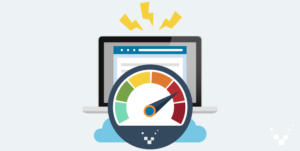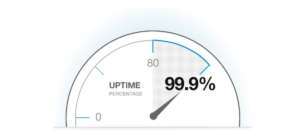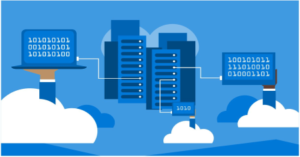12 Essential things you need to know about website hosting and support
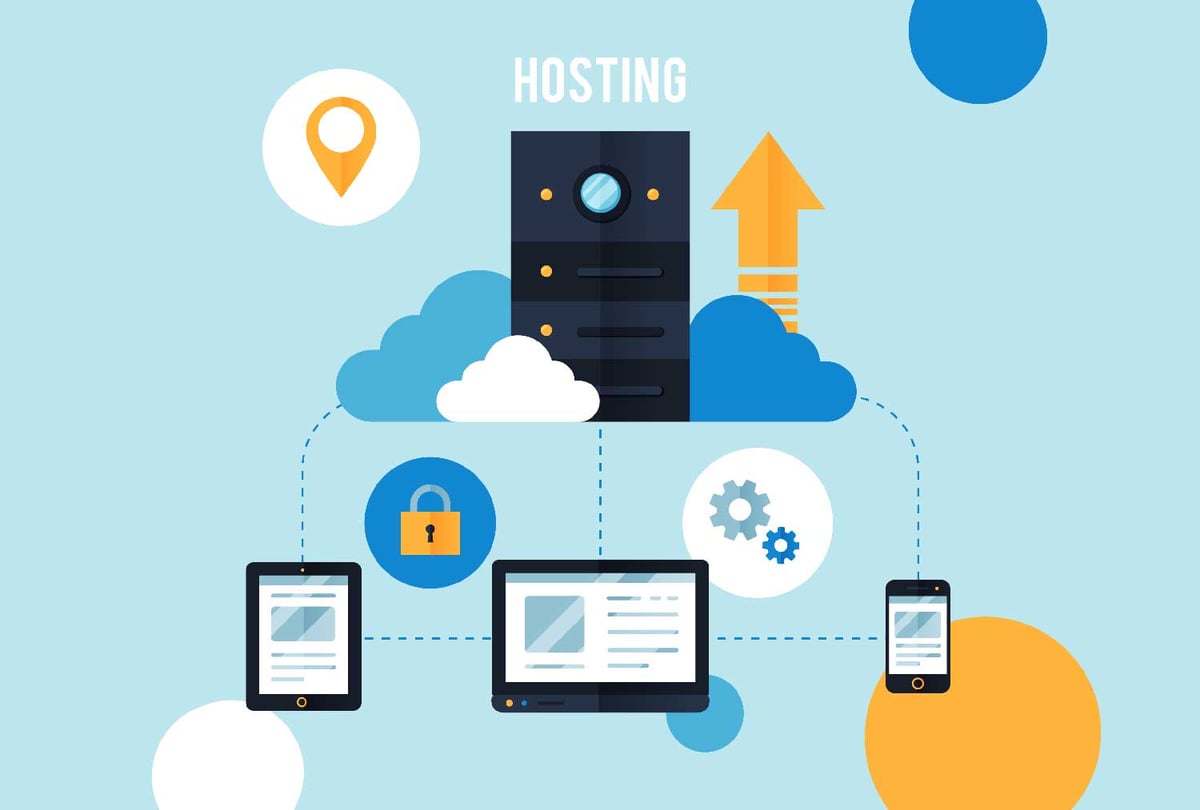
Websites aren't something that you can "set and forget". They need to be managed and looked after to provide your business with any benefits. How your website will be hosted and managed should be an important factor to consider when looking for a new website.
Why hosting and support matters
Neglecting a decent hosting environment will result in a website that performs slowly. Or worse, a poor hosting environment may be unstable, and if they are not performing daily backups, you could potentially find yourself locked out of your website, or with no website at all!
Support for websites can come in many flavours, but at the very minimum websites need to be kept up-to-date and monitored for security and performance. Failing to keep a website up to date can leave it open to security vulnerabilities, and hinder overall website performance.
What to look out for with your hosting and support plan
Being able to make the right choices for hosting and support requires some basic understanding of what these really are. But some of these things can be quite technical, and most people end up making decisions based on guess-work.
Well, after reading this post you won't have to guess. You'll have a check list of things to look for that will make sure you get a great hosting and support package for your website.
Here are the top 12 things to look out for with hosting and support, and what they mean.
- Server Technology
- Server Location
- Security Monitoring
- SSL Certificates
- Backups
- Performance Monitoring
- Content Delivery Networks
- Up-time monitoring
- Updates and Maintenance
- Database Optimisation
- Customer Support
- Reporting
1. Server Technology
What is a website server?
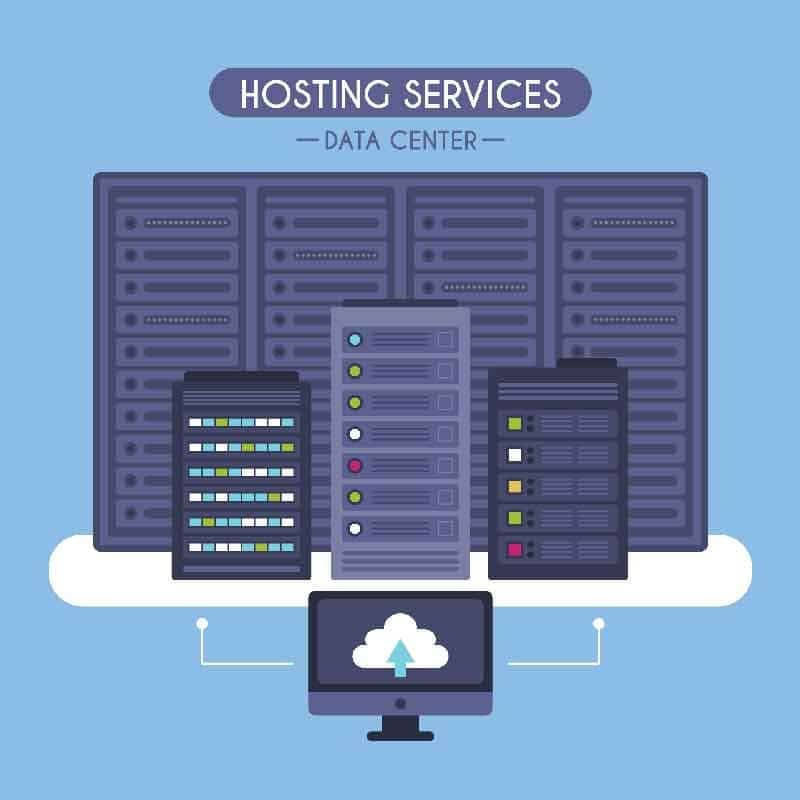
This is basically the computer that has all of your website files, and when needed, "runs" your website so that someone can see it. Just like a home computer, it is the combination of hardware (hard drives, CPU, RAM etc) and software (operating system, database, caching and server applications).
Naturally, a modern server that uses powerful hardware will perform better than an old, slow one. Additionally, the software and configuration of the server should be optimised for the type of website that you plan on running.
Shared hosting compared with Virtual Private Servers
Because of the cost of hardware,and the low demands of the average small website, it's common for a server to host several websites at once. This is known as shared hosting, and it's the most common hosting method for small to medium websites. Think of this as a highway that is shared by many vehicles. Most of the time other vehicles don't impact your journey, but it is technically possible that too many other vehicles on the road could cause you delays. On the other hand, Virtual Private Servers are dedicated chunks of resource that are only accessible to a defined website. Think of this as a private road. There is no chance of anyone else getting in your way.
However, the reality is that a well-managed shared host is more like a highway with a thousand lanes; it will virtually never become overloaded. Also, this means that your website has access to this huge resource, if by chance it should happen to need it. On the other hand, with a Virtual Private Server, you'll have to pay for all those lanes yourself, even when you're not using them.
What to look for in a website server
For this section I'm going to assume that you're looking for a server to host a WordPress website. Please keep this in mind if you're thinking about a different kind of website.
The disk space needed for the average WordPress website is very small, with 1GB usually being ample, so don't feel that you must get more space. If you plan on hosting lots of high-quality images or videos, then naturally this will increase. Check with your host to ensure that you'll be able to upgrade later if you need to.
A shared server will be fine for the average website. Most websites will not see any benefit from being on their own Virtual Private Server.
Now for some technical things to check-off your list: The server should run on solid state drives, use PHP 7.1 or higher, and be loaded with Varnish, Memcached, and Nginx. You don't need to know what these things are, just that if they are not available on your server, then you should look elsewhere.
- The disk space needed for the average WordPress website is very small, with 1GB usually being ample, so don't feel that you must get more space. If you plan on hosting lots of high-quality images or videos, then naturally this will increase. Check with your host to ensure that you'll be able to upgrade later if you need to.
- A shared server will be fine for the average website. Most websites will not see any benefit from being on their own Virtual Private Server.
- Now for some technical things to check-off your list: The server should run on solid state drives, use PHP 7.1 or higher, and be loaded with Varnish, Memcached, and Nginx. You don't need to know what these things are, just that if they are not available on your server, then you should look elsewhere.
2. Server location

Why does server location matter?
The proximity of your server will make a huge difference to the time it takes to load your website. The time it takes for your browser to communicate with the server increases over distance, and multiplies by the number of requests the browsers makes (the number of things - like images and files - it has to get from the server).
You can see this for yourself by comparing websites load times from different geographic locations with tools like Pingdom. Typically, you'll find a 2 second difference based on the location, and as I'm sure you can relate to, 2 seconds is a huge amount of time when it comes to website loading time!
Most cheap servers are located in the US or UK, meaning that not only will the technology and software slow you down, but so too will the location. Page speed is super-important for both user experience as well as search engine optimisation, so it really matters to get this right.
What to look for
- Make sure you find a server that is geographically located as close to you as possible. For New Zealand, this will probably be Sydney.
3. Security monitoring
Why does security monitoring matter?

It's a big bad world out there. While it's hard to talk about the importance of security without getting into the details, there are all sorts of ways that your website could be attacked, and most of them are not immediately noticeable. For example, you probably wouldn't notice right away if a new user account had been quietly on your website. You might not notice that this new user account gains the role of Administrator. You wouldn't notice if your website sent an email to the attacker sending them the login details for this new user account. But, you certainly would notice an email from the attacker telling you that your website was offline and could only be restored if they get a huge payment from you.
There are too many ways that this can happen to dig into the technical details, however, they all tend to begin with a vulnerability being identified and exploited. We'll talk about keeping up-to-date later, however, it's also important that your website is actively scanned to ensure that known threats haven't penetrated your system, or that your website hasn't been blacklisted.
What to look for
A good hosting and support environment would include daily monitoring of your website to ensure that your website remains safe and clean form malicious scripts. You should expect to receive the results of these tests on a regular basis, and know that threats can be managed.
- Daily scanning
- Scan results reported on a regular basis
- Mitigation or management strategies provided
4. SSL Certificates
What is an SSL Certificate?

While we are on the topic of security, let's talk about SSL. SSL stands for Secure Sockets Layer, which is a protocol that creates a secure connection between your website and your visitors browser. This essentially ensures that what the visitor sees is an unaltered version of your website, and any information that your visitor enteres into your website cannot be intercepted or altered before reaching your server. For example, imagine someone visits your website and views your home page. But only this time there is a new section that asks the visitor for their email address in exchange for a (bogus) free gift. When your visitor submits their email address, it will be received by someone else who can now leverage that, and what they have learned about the visitor (that they now believe they will be receiving a free gift), to acquire some kind of advantage. This is just a very crude example to explain the vulnerability that SSL resolves.
Because of the importance of being secure, Google now penalises website that are not served over a secure connection.
What to look for with an SSL certificate
Consider it an absolute "must" that your hosting provider includes SSL for your website. Also, this should come free. No questions asked. Also, make sure that your website is properly configured by checking the padlock icon exists on every page, otherwise having the certificate simply wont be enough.
- SSL included, unconditionally
5. Backups

It should go without saying that back-ups are essential. Sure, you may have a back-up of your original website, but things will change over time and before long, your website won't resemble that original form. Even on a daily basis your website may be making sales, getting new members, new comments, or publishing new posts. Automatically capturing daily backups is a critical part of website hosting and management.
What to look for with a backup solution
Make sure that your hosting provider includes daily backups of your website, and that each back-up is kept for at least 30 days. You may not have direct access to the backups, but as long as they are there, and being updated every day, you will be able to sleep well knowing that even if the worst case scenario happens, you'll be able to roll-back and be online again in no time.
- Daily site backups
- Backups stored for 30 days
6. Performance monitoring
What is performance monitoring?
Keeping your website running quickly is one of the most important things you can do to ensure your visitors have a positive experience, that your brand presents itself professionally, and also to ensure that search engines see your website as being of high-quality. These days, having a slow website will seriously hurt your search engine rankings.
While your brand new website might perform well, it's likely that things will change as your website grows with more content or feature upgrades. by measuring the websites load speed, and evaluating the performance optimisation of the website on a daily basis, you can be sure to pick up on changes that cause it to slow down and to easily locate and rectify those issues.
What to look for with performance monitoring
Admittedly, most hosting providers will not include performance monitoring in their standard suite of services, however if you can find a provider that does include this then it's a very positive sign.
Ask your hosting provider if theyinclude daily performance monitoring of your website, and take it as a win if they do!
- Daily website performance monitoring
7. Content Delivery Networks
What is a Content Delivery Network?
For a visitor to view your website on their browser, they must download all the data (pictures, code files etc) from the server. When this all happens from the one server there can be a bit of a delay particularly when there are lots of files, or large files to download.
A content delivery network (CDN) is essentially a network of global servers that help to share the load. These servers keep copies of your static assets (like images and files) and allow visitors to download your website from multiple locations simultaneously, thereby speeding up the process.
What to look for with CDN
CDN's are not your typical add-on to a hosting environment, and very few providers offer this service as default. However, CDN's are becoming increasingly popular, so ask if your hosting provider will include this in their bundle.
Providing a CDN by default would certainly indicate a hosting provider that cares about your website's performance.
- CDN included to improve website speed
8. Up-time monitoring
What is up-time monitoring?
One of the worst things that can happen to a website is for it to go offline. While this is unlikely, it happens more than you may think. Usually it's so transient that nobody will notice, and often the browser will try again so quickly that even the visitor wont notice. However sometimes it's more permanent. Perhaps a user saved a setting that caused an error that ultimately takes the website offline. Or more simply, perhaps you forget to renew your domain name (it happens!).
What makes this issue difficult to detect is the fact that many small business owners simply don't constantly check their website to make sure it's still there. Some people would go days or even weeks between visiting their own website.
So how would you know if something terrible happened and your website was down? The answer, of course, is with up-time monitoring. Up-time monitoring basically involves a programme that automatically checks your website every minute or so to make sure that it is still live and responding. If the website doesn't respond, then the application will immediately notify someone.
What to look for with website up-time monitoring
Whatever the reason, real-time up-time monitoring is the only way to ensure that your able to respond to any events that may cause your website to go offline. Ideally, this would be monitored by someone with expertise to respond and resolve down-time events.
Ask your hosting provider if they provide up-time monitoring of your website.
- Uptime monitoring
- Rapid response support to resolve issues
- Reporting
9. Updates and Maintenance
Why are updates and maintenance important?
Keeping up with the changes in technology can become a daily task, and failing to keep up can leave your website vulnerable to attackers that seek to exploit known vulnerabilities. These are known as zero-day attacks. Basically, there is a slim window of time between a vulnerability being discovered and then vulnerability being fixed in a software update. When the software is updated, the vulnerability is typically published to public registry. Updating the software on time will protect you against attacks, however, failing to update the software will leave your website exposed to publicly known vulnerabilities.
Updating your website is usually pain free. It involves visiting the admin are daily, and performing all updates. However, problems begin when website owners inevitably get lazy and de-prioritise updates. Another complication that can occur is for the update to cause a conflict that affects your website negatively. Sometimes this shuts your website down, meaning that you also don't have access to undo the update! Having updates and maintenance bundled in a hosting and support plan is an ideal way to ensure you website is managed and up-to-date.
What to look for in updates and maintenance
First, you should check to see if the hosting and support plan includes websites updates and maintenance, and if it does, check to see if themes and plugins are included. Check if there is a strategy to handle updates that cause conflicts. Some technologies involve taking screenshots, backing up, updating, taking and comparing screenshots, and rolling back if anything looks out of place.
Because of the complexities and potential risk of updates causing conflicts, many hosting and support plans do not include this feature. However, finding a provider that does include it should be considered a win.
- Managed plugin updates
- Managed core updates
- Conflict checking and roll-back ready
10. Database Optimisation
What is Database Optimisation?
You database is basically the place where all of your websites data is saved. Things like the content of post and pages, as well as all of your websites settings and options, and things like comments, orders, drafts, and user logs. Overtime, your website's database will grow as new data is constantly added. Naturally, the larger your database grows, the slower it can become.
Database optimisation is a process of removing old draft versions, spammy comments, and general overhead (e.g., temporary entries that are no longer needed), so that your database will be able to access data quicker, resulting in faster loading web pages.
What to look for in optimisation
Database optimisation is something that would not normally be covered by a hosting plan, however it may be covered by some support and maintenance packages.
To gain a better understanding of the hosting and support services that you are looking at, be sure to ask if your provider includes database optimisation as part of their service offering. While it's not a deal-breaker if they don't, it will mean that this is something that you should look into managing yourself if you want to keep your website functioning optimally.
- Managed database optimisation
11. Customer Support

High quality and rapid customer support is an expectation these days, however getting the right level of support at the right time is not a given. Many hosting providers will provide support for the specific services they offer, and you could easily find yourself seeking support that is simply out-of-scope for your hosting provider.
Support is one of those things that you will seldom need to call on, but when you do, you want to know that you can do so with confidence. Support is often provided by email or support tickets, sometimes by live chat, and rarely by phone. Support is almost always limited to the specific services that are provided. For example, a typical hosting provider would not provide support if a new plugin had a compatibility issue with your website, or if you couldn't figure out how to add a new page to the navigation bar.
Rarely, you may find a support service that will help you with general website issues, and occasionally, some support packages may include doing tasks like updating headings and posts that you would rather not have to worry about.
What to look for in a support package
Make sure that you're comfortable and aware of the support package that is available, and the ways in which you can get support when needed. Live chat support is ideal, but it's not always available. Ticket-based or email support is an absolute must.
- Ticket support
- Live chat support
- Phone support
- Email support
Also, make sure you understand how supports affects different needs. For example, what happens when:
- Your website goes down
- You are locked out of your website
- Your plugins aren't playing nicely
- You need help formatting a page
12. Reporting
What is reporting?
Knowing what is going on in the background of your website is an essential element of website monitoring. Although reporting is not necessary for bare-bones hosting and support packages, it becomes increasingly important for more comprehensive services that include things like mainteance and monitoring.
Comprehensive reporting should inform you of how your website is performing, what updates have been performed, if there are any security threats to be aware of, and if your website has suffered any downtime.
In most cases, reporting simply communicates what has happened, and doesn't typically require any extra work or response from the website owner. Reporting is a great practice as it ensures transparency from the hosting provider, as well as accountability should any measures fall below acceptable levels.
What to look for with website reporting
Because not all providers will include website hosting, it's worth asking if reporting is included in the package, and finding out what is included.
Ask you hosting provider what they report to you, and specifically, if they report on thing like:
- Downtime events
- Security vulnerabilities
- Performance results
Conclusion
There is a fair bit involved in hosting and maintaining a website. Although, most of these are not required to have a website live, which is probably why there are still so many slow, insecure, and dated websites on teh internet! The tough part of course is making all of this happen, coordinating the work, and paying for. For an individual website owner, as suite of services like this could cost about $300 per month. However, for a professional outfit that manages multiple client websites, it becomes scalable and can be offered in bulk.
And yes, in case you were wondering, this is exactly what we offer at SplashDigital for a slim fraction of the price that you would be able to get elsewhere. Needless to say we're very proud of the hosting and support services that we're able to provide, and we'r yet to find anyone that provides anything as good, let alone better.
TAGS:
